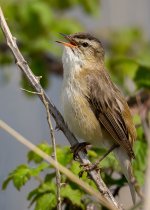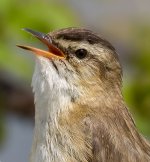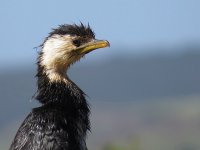Laughing Kookaburra
Well-known member
I'm looking at both Micro 4/3 and Superzoom (Bridge Cameras) formats for a camera that's lighter and more compact than DSLR's. From what I've seen so far, it looks like:
1) You get larger image sensors, better image quality and the flexibility of interchangeable lenses and better video as well as other features on the micro 4/3 cameras
2) However the zoom lenses for Micro 4/3 cameras aren't anywhere near as long as those available for DSLR's, and of course less than the zoom ranges on super zoom cameras which reach 30-60X optical zooms. For example, a friend just purchased a Panasonic Lumix DMC-GH4, which is an excellent micro 4/3 camera with the best 4K video capability, and the largest zoom available only offers about 10X optical zoom. This is a problem when you can't get close to your bird and animal subjects.
I'm just starting to look into this, so please correct me if I'm wrong. I'm approaching this with no prior bias and sincerely appreciate your advice.
Which are the best Micro 4/3 camera and lens combinations for bird and wildlife photography?
What are the most powerful quality zoom lenses available for Micro 4/3 cameras? What's generally the upper optical zoom range for Micro 4/3? Are there any Micro 4/3 lenses that approach the 30-60X optical zooms on superzoom cameras?
At the value end, a friend just picked up the new Samsung NX500 Mirrorless, which is a great value considering it also handles 4K video: http://www.bhphotovideo.com/c/produ...00zbmius_nx500_mirrorless_digital_camera.html
With this pancake lens: http://www.bhphotovideo.com/c/product/706654-REG/Samsung_EX_S30NB_EX_S30NB_30mm_f_2_0_Standard.html
This 50-200mm telephoto appears to be the max available for the NX500: http://www.bhphotovideo.com/c/produ...0mm_f4_0_5_6_lens_black.html/pageID/accessory
My friend who picked up the Panasonic Lumix DMC-GH4, picked up these lenses:
Telephoto: Panasonic Lumix G Vario 14-140mm f/3.5-5.6 Lens
http://www.amazon.com/gp/product/B00CFCTH14/ref=oh_aui_detailpage_o01_s02?ie=UTF8&psc=1
And this pancake lens: http://www.amazon.com/gp/product/B00DJS830Y/ref=oh_aui_detailpage_o01_s00?ie=UTF8&psc=1
1) You get larger image sensors, better image quality and the flexibility of interchangeable lenses and better video as well as other features on the micro 4/3 cameras
2) However the zoom lenses for Micro 4/3 cameras aren't anywhere near as long as those available for DSLR's, and of course less than the zoom ranges on super zoom cameras which reach 30-60X optical zooms. For example, a friend just purchased a Panasonic Lumix DMC-GH4, which is an excellent micro 4/3 camera with the best 4K video capability, and the largest zoom available only offers about 10X optical zoom. This is a problem when you can't get close to your bird and animal subjects.
I'm just starting to look into this, so please correct me if I'm wrong. I'm approaching this with no prior bias and sincerely appreciate your advice.
Which are the best Micro 4/3 camera and lens combinations for bird and wildlife photography?
What are the most powerful quality zoom lenses available for Micro 4/3 cameras? What's generally the upper optical zoom range for Micro 4/3? Are there any Micro 4/3 lenses that approach the 30-60X optical zooms on superzoom cameras?
At the value end, a friend just picked up the new Samsung NX500 Mirrorless, which is a great value considering it also handles 4K video: http://www.bhphotovideo.com/c/produ...00zbmius_nx500_mirrorless_digital_camera.html
With this pancake lens: http://www.bhphotovideo.com/c/product/706654-REG/Samsung_EX_S30NB_EX_S30NB_30mm_f_2_0_Standard.html
This 50-200mm telephoto appears to be the max available for the NX500: http://www.bhphotovideo.com/c/produ...0mm_f4_0_5_6_lens_black.html/pageID/accessory
My friend who picked up the Panasonic Lumix DMC-GH4, picked up these lenses:
Telephoto: Panasonic Lumix G Vario 14-140mm f/3.5-5.6 Lens
http://www.amazon.com/gp/product/B00CFCTH14/ref=oh_aui_detailpage_o01_s02?ie=UTF8&psc=1
And this pancake lens: http://www.amazon.com/gp/product/B00DJS830Y/ref=oh_aui_detailpage_o01_s00?ie=UTF8&psc=1
Last edited:











